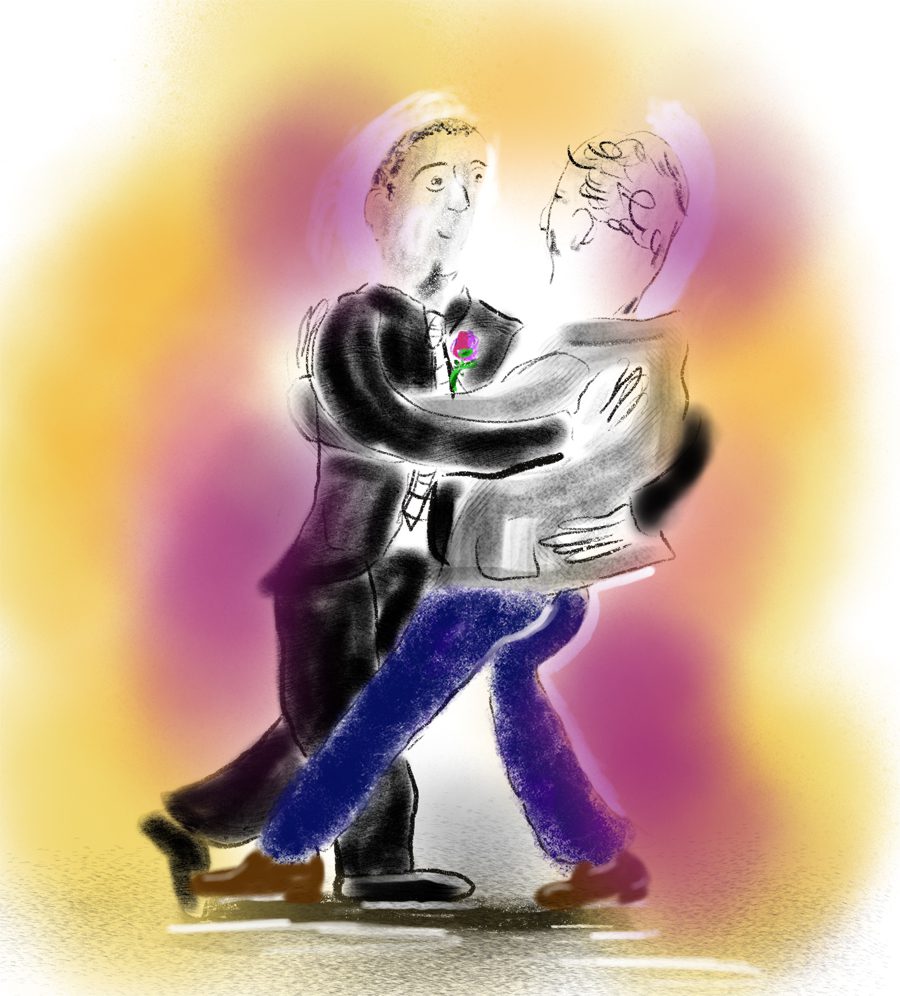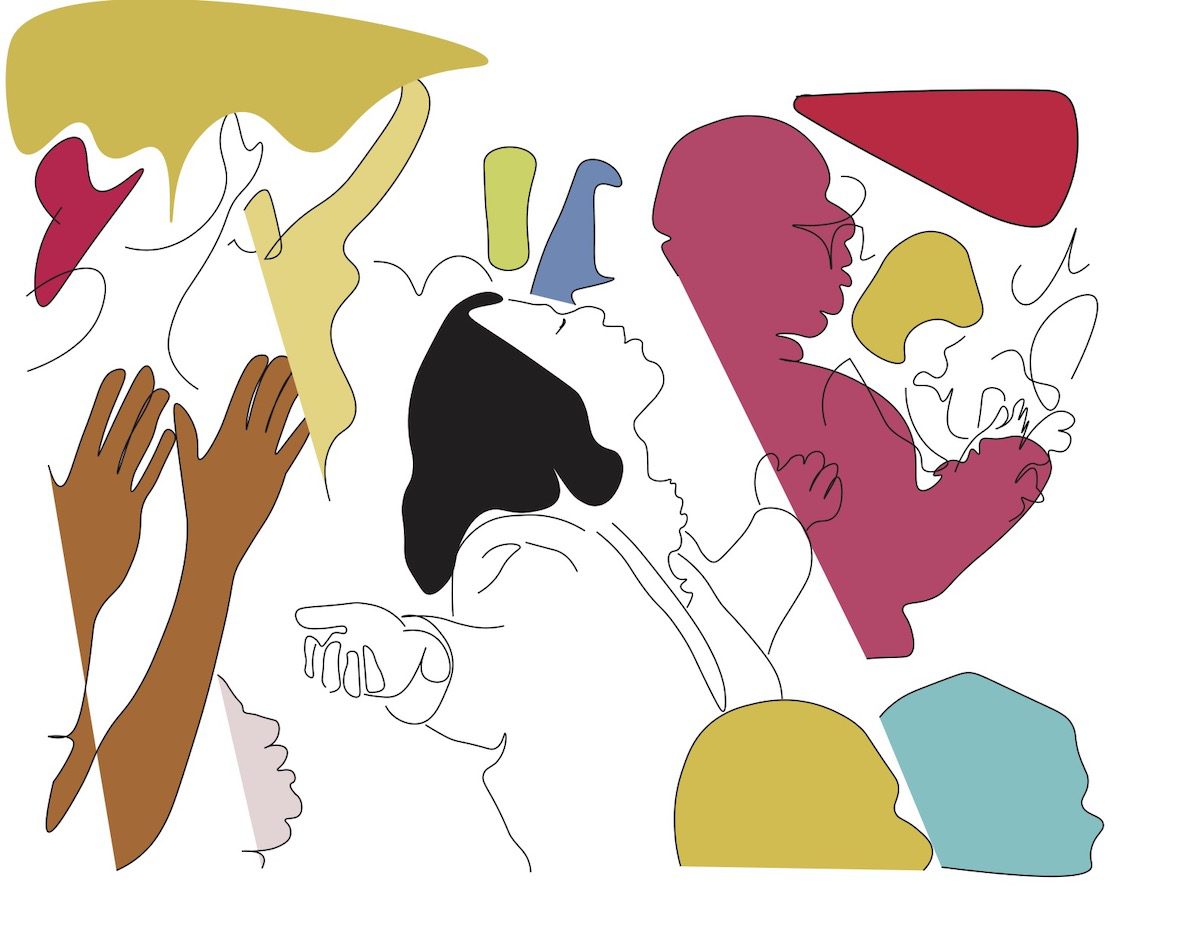Various Artists
Luz de Vida (Fort Lowell Records)
1. A Little Context
Tragedy can define a city, coloring not only the way it is perceived by outsiders but, inevitably, the way the city’s people see themselves. Tuscon, Arizona dominated the national headlines on January 8, 2011, when 19 people, including Congresswoman Gabrielle Giffords, were gunned down in a grocery store parking lot. Luz de Vida is a musical response to that shooting: an attempt to reclaim the popular associations of this southwestern city by collecting various musicians—primarily locals but also admirers of the scene there—in an expansive compilation tribute album. It should be noted that Congresswoman Giffords, an admirer and acquaintance of the fellows in a local band of national reputation, Calexico, survived the incident but only recently regained the ability to walk on her own power. Six others weren’t so lucky, and that anniversary will certainly continue to fill us with dark reminders. Among the questions posed by Luz de Vida are eternal ones as to whether music can bear witness to tragedy, whether song can heal its wounds.
2. A Little More Context
Just to give you a sense of my bearings here, I should mention that the first compilation album I ever owned was Hell Cat Records’ Give’em the Boot II. It featured the class of ’98 in ska and punk: everybody from Choking Victim to the Voodoo Glow Skulls, the Slackers to Rancid. You might remember that half-hated, half-adored second and third generation of the two-tone riot. Although there was focus to Give’em the Boot II, like all compilation albums it is necessarily a kind of piece-meal time capsule.
Luz de Vida finds its focus by being a product of Tucson and those connected to it: it is grounded both in its tribute and representation of the Southwest border lands. From the get-go there’s an immediate sense of these vibrant and various sounds and it may not have been just my imagination when I heard the desert in them. For every track by a well known band, for every song by a band that seems to be trying to sound like a well-known band, the compilation also features local folk artists and blues players, mariachi music, south-of-the-border sounding surf-rock, spirited new takes on classic R&B and country. There’s a lot there, so it’s fitting that Luz de Vida appears in two forms: a limited edition vinyl release featuring strictly Tucson bands, and a much more expansive digital download which includes musicians close to that city’s scene.
3. The Vinyl
There’s something sunny happening with the vinyl’s opening track, “People Beat” by Dead Western Plains, a slice of unabashed indie-pop pie complete with layers of gang vocals (one imagines skinny bearded fellows), the afro-beat-meets-Joy-Division drum beat and requisite white-boy groovy bass line. In the context of this compilation, the song is prescient from the very first lines: “We know the beat between the rest” acts as an evocation of the desert, a declaration of its own land-locked music. As much as Dead Western Plains might gesture toward similarly minded bands (Vampire Weekend, Beach House, et al.) from the coastal cities that drive—or at least claim to drive—the scene, the easy feel of the pop-vocal layers seems delightfully unrestrained, building to a rounded-out dance explosion. Similar notes are hit by Holy Rolling Empire, although its offering, “Father’s Father,” is immediately more in-your-face and ratchets up to an even more furiously digestible pop. I can’t say these bands sound particularly original or innovative, but they sound current and fun. Tuscon’s scene, evidently, does not reside under a rock.
This record also features the recorded debut of Kiss & the Tells, whose surprisingly dark take on doo-wop seems to be sung by the girl with the whiskey flask at the 1963 senior prom. The old-school R&B instrumentation—keys spliced by guitar, a tight box-like rhythm section—underscores a haunting back-and-forth between the lead vocalist and her back-up singers. And, of course, their offering, “Tell Me Now,” is a love song, a desperate wail, and as such a clap-track away from evoking the work of the Ronettes or Diana Ross, not to mention contemporaries Sharon Jones and the Dap Kings. Dipping into similar strands of musical history is Chango Malo, with a fittingly anguished and bittersweet live cover of Sam Cooke’s emblematic “Change is Gonna Come.”
Love it or hate it, Tom Waits has spawned many an admiring protégé, as has his snarky senior, Lou Reed. Giant Sand’s “Recovery Mission” brings to mind both of these giants without being overly derivative of either of them. Front-man Howe Gelb has his own kind of growl, and he is served well by the upright bass, brushed snare, keys and reverb-ey guitars that back him up. With lines like “our collective horror becomes a spittoon,” and “the stories are the headlines… the rain commiserates” the song addresses the tragedy of January 8, but does so obliquely; terrestrial images rub up against a narrative that seems to be coming from (and actually also going to) outer space. It is unsurprising that Giant Sand was the band that brought together Joey Burns and John Convertino of Calexico, whose own offering, “Absent Afternoon,” also has a downbeat, acoustic vibe. While this tune verges dangerously close to coffee-shop territory—a harmonica duets with Joey Burns’ husky vocals while acoustic guitar notes contort around—the layers of instruments seem to point to an underlying darkness that, to my mind, sets it apart from more cookie-cutter singer-songwriter affairs.
It is gratifying, too, to see that Luz de Vida also includes music with origins south of the border. The inclusion of mariachi music and Mexican folk seems absolutely essential for an album as regionally grounded in the Southwest as this one is. I was especially impressed by Mariachi Luz de Luna with its “Luz a la Vida,” whose vocal harmonies are powerful and mournful in a lovely, bittersweet way. But it is the closing track, “Gabynda (Yolanda),” by Salvador Duran, that really lingers. A beautiful ballad composed of nothing more than a single finger-picked guitar and a tapping foot, it entrances for a solid seven and a half minutes. Something about this choice of closer, with its tasteful simplicity and earnest longing, speaks to the project of this tribute album as a whole.
4. The Tribute Digital
Since the digital edition is more than twice as long as the vinyl, it necessarily loses some focus. Bigger names are represented here: Neko Case, the Meat Puppets, Spoon, even Jimmy Eat World. Among these national acts, I was particularly taken with John Vanderslice’s “Pale Horse,” in which the acoustic guitar sounds like a jagged weapon slicing through vocals on a bed of electronic blips and beats. Vanderslice’s signature sound works particularly well in this mix. Another gem comes from former Soft Boys frontman (and longtime solo artist), Robyn Hitchcock, with “Light Blue Afternoon,” a bit of rollicking catchy British-inflected pop.
There’s certainly evidence of the resurgence of a distinctly ’90s grunge/’80s college rock sound in Luz de Vida. For instance, Tuscon’s HAIRSPRAYFIREANDGIRLS’s “The Only Child” sounds more like the Meat Puppets than that legendary band’s own contribution to this compilation, with its layers of guitar, yowling group vocals and heavy backbeat. La Cerca takes a similar approach: The droning bass and guitars certainly bring to mind an era when, to paraphrase ’90s cult comic strip artist Joe Sacco, everyone’s main influences were Sonic Youth and Pavement. I wonder if it isn’t a nostalgia for the coffee houses and hacky-sack circles—not to mention a yen for that old post-hardcore sound—of my youth that leads me to like their tune “Swim an Ocean.” Of course, maybe this would be better addressed by throwing on Hum’s You’d Prefer an Astronaut for the first time in a few years.
My new heroes here are El Depravos (playing with Chuck Prophet). With the instrumental “Vampire Requiem,” the group achieves a kind of menacing south-of-the-border, garage-rock carapace. There is something menacing, dangerous in the sound: the lead guitar swaggers into a saloon, threatening a fight but instead buying a round of bourbon for the whole bar. It is the kind of song that would find a good home in a Quentin Tarantino sound track, the kind of song that makes you feel cooler than you actually are just by listening to it. It is the kind of song that lowers its shades and winks at you, before getting back on its motorcycle.
5. A Final Thought
Luz de Vida attempts to at once memorialize the tragedy of January 8 and move beyond it. A compilation like this, in its tribute, seems to speak to the words of another troubled era, penned and sung by one of the great popularizers of socially conscious lyric, John Lennon: “Well I know how we tried and the millions of tears we cried/ Now we are hipper we been through the trip /… / There’s nothing on earth we can’t do.” We’d like to believe him, and so we carry on.




